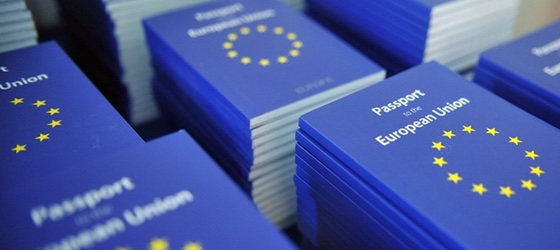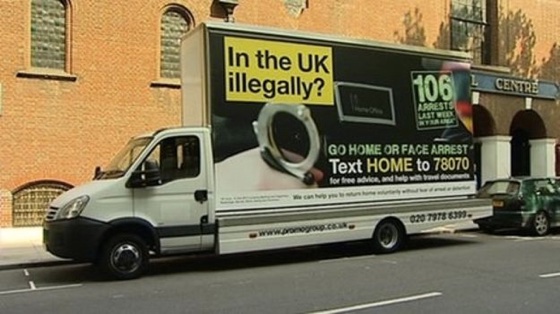Moving and Migrating the Borders of Europe: Beyond the East and West Divide?
M.A. in Political Science, European Union Policy Studies

In its long history, Europe has witnessed many different shifts in borders, usually accompanied by the re-mapping of political boundaries and revising of ideologies. It is almost unquestionably agreed upon, by historians and social scientists alike, that one of these re-mappings occurred in the late 1980s, with the fall of the Berlin Wall and the end of the Cold War. During the 1990s, especially in the former socialist countries, public discourse centered on European reunification, a process transcending the East/West divide and abolishing outdated borders. The European Union’s enlargement from 15 to 28 countries seemed to confirm this reality. After the so-called “Big Bang” enlargement of 2004, eight post-socialist countries became EU members (Czech Republic, Estonia, Hungary, Latvia, Lithuania, Poland, Slovakia, Slovenia), followed by Romania and Bulgaria in 2007 and Croatia in 2013. Furthermore, most of the post-Yugoslav countries (Macedonia, Montenegro, Serbia) are currently undergoing negotiations to join the EU. The twenty-fifth anniversary of the fall of the Berlin Wall, last November 9th, calls for a reassessment of the project of a reunited, borderless Europe. Is Europe, or at least the EU, really borderless for all its citizens? And what is the position of those who, for the time being, remain on the EU’s outer margins and are striving for the membership in the EU club?
When deliberating on a possible eastward enlargement, during the European Council's 1993 meeting in Copenhagen, the heads of state and government defined the rules that each state wishing to join the EU had to follow. These rules became known as the Copenhagen Criteria[1]. They included economic stability within a free market system, democratic rule of law, respect of human rights and the protection of minorities. Indirectly, these criteria attempted to overcome what was perceived as the east-west divide, thereby shifting the borders in Europe. As pointed out by many political scientists, however, those rules only applied to countries asking to join the EU. The ones who had designed these criteria were not put under scrutiny in the same way. Many civil society actors[2] questioned the respect of minority rights in the old member states, particularly with respect to different Romani minorities, who suffered poor living conditions, and often abject poverty and discrimination.
On the very eve of the 2004 ‘Big Bang’ enlargement, on April 30, 2004, one of the most impactful and decisive directives came into being. This is now widely known as the “Free Movement of Citizens” Directive (2004/38/EC)[3], which gave rights to all citizens of the EU to “move and reside” in another EU state. For many people from the former socialist states (especially ones formerly allied with the USSR), this was a Copernican shift. Previously forced to live in states that had almost hermetically sealed borders, now the promise of free movement brought a new world of possibilities.
Yet, the “Free Movement of Citizens” Directive was implemented very slowly in the new EU members. Furthermore, the rights given to EU citizens were not absolute. Certain rights were limited by particular rules and only applicable if the EU citizen that migrated across the internal EU borders did not present a disproportionate socio-economic burden for the host state. Therefore, many of the old member states were able to temporarily limit access to their labor markets for the citizens of the east. While this limitation was last lifted for Bulgaria and Romania on January 1, 2014, Croatian citizens will still need a work permit in most EU countries until 2020.
In 2013, just before the provisional limitations for access to the labor market were to be lifted for EU citizens with Bulgarian and Romanian passports, the UK Home Office started the ‘van campaign’. Throughout the UK, vans with a poster saying: “In the UK illegally? Go home or face arrest” appeared. While the vans received major criticism, they were part of a broader euro-skeptic argument, centered on opposition to the intra-EU migration (especially from particular new EU members). Such movement is growing all over the EU. The question of intra-EU migration is also particularly underlined in the current political campaign for the UK general elections scheduled for May 7, 2015.

Source BBC
This debate is constantly gaining new dimensions, since it does not only highlight the migrants from the new EU member states that come to “steal our jobs”, but also raises uncertainties about welfare tourism[4] and disturbances of public order. The latter two phenomena are especially applicable to the most unwanted intra-EU migrants, the individuals identified as belonging to Romani minorities. In absolute terms, few Romani individuals have migrated from the east to the west of the EU. Romani migrants are particularly visible, though, and such visibility is often accompanied by discrimination. Yet the old EU member states have not developed efficient tools to deal with this new type of intra-EU movement. When facing migrants carrying EU passports, deportation is not a straightforward or simple measure to use anymore. Thus, many different states have adopted an approach to encourage so called measures of ‘voluntary’ return.[5] How voluntary such returns can be is certainly questionable.
As hinted above, the reordering of European borders has not stopped with the “Big Bang” enlargement. Many states in the immediate neighborhood are still in the process of joining the EU. The relationship between the EU and these post-Yugoslav states is characterized by many ambiguities that are particularly noticeable when it comes to the issue of borders. Former socialist Yugoslavia was a non-aligned state, and its citizens holding the red Yugoslav passport[6] had many more opportunities to travel both to other socialist countries and to the countries of the former European Economic Area. But after the wars of the 1990s and the subsequent disintegration of what was once a united Yugoslavia, the changed borders and political boundaries had a varied impact on the freedom of movement of former Yugoslav citizens: some are now EU citizens, while others are on its outer margins. Even if the latter group has enjoyed some visa liberalization,[7] and is therefore able to travel more freely in the Schengen Zone, such concessions were also accompanied by readmission agreements, which led to many returns[8] as well as deportations. Moreover, the European Parliament decided that the visa free regime for the post-Yugoslav countries is not absolute, and that visas can be reintroduced in case of a major influx of asylum seekers[9] (mostly belonging to minorities such as the Romani) towards the EU.
After considering all these factors, the question still remains, whether the project of a borderless and united Europe has really been achieved, or can be achieved at all. While the outer borders are shifting, some old internal political boundaries and beliefs, as well as certain latent structural inequalities within the EU, remain intact. These usually come to the fore when the debate turns to the question of migration. Hence, we can conclude that the project of a united, borderless Europe will only be achieved when the European Union will find ways to address and overcome certain power relations between the east and west, and ways to address persistent internal inequalities.
Written by Dr. Julija Sardelic
[1] http://ec.europa.eu/enlargement/policy/glossary/terms/accession-criteria_en.htm
[2] http://www.opensocietyfoundations.org/voices/myth-spanish-model-roma-inclusion
[3] http://eur-lex.europa.eu/LexUriServ/LexUriServ.do?uri=OJ:L:2004:158:0077:0123:en:PDF
[4] https://euobserver.com/justice/126466
[5] http://www.hrw.org/news/2012/08/10/france-renewed-crackdown-roma
[6] http://www.citsee.eu/citsee-story/afterlives-yugoslav-red-passport
[7] http://www.citsee.eu/citsee-study/europeanisation-through-mobility-visa-liberalisation-and-citizenship-regimes
[8] http://www.citsee.eu/citsee-study/politics-return-inequality-and-citizenship-post-yugoslav-space
[9] http://www.europarl.europa.eu/news/en/news-room/content/20130910IPR19556/html/EP-backs-rules-allowing-suspension-of-visa-free-travel-only-as-a-last-resort
